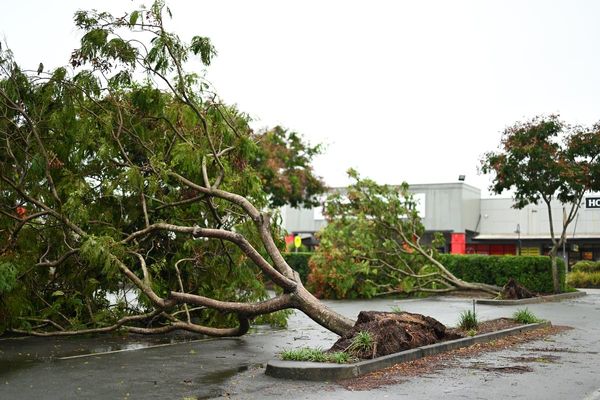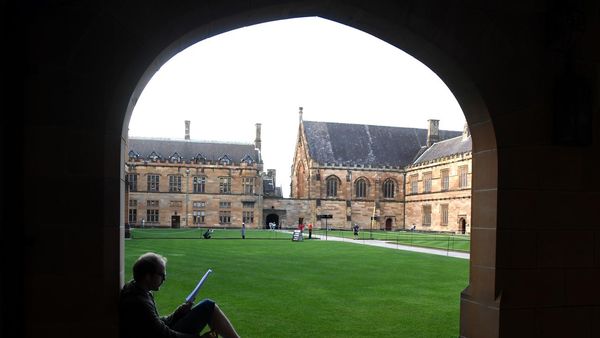
The blueprint for the future of tertiary education in Australia has been finalised, after 12 months of negotiations and input from hundreds of stakeholders.
The highly anticipated universities accord final report makes 47 recommendations – including dramatically expanding access to higher education among disadvantaged Australians and addressing cost-of-living concerns.
With the federal government considering the key reforms, here’s what’s on the table.
A fund for disadvantaged students
In order to meet future and current skills shortages, the report says a dramatic take-up in higher education among equity cohorts is needed. But providing support and services is expensive.
The report makes a bid for needs-based funding to ensure people from underrepresented groups succeed. This model includes bonuses for providers with high student completions.
First Nations students, those from low socioeconomic backgrounds (SES) and people with disabilities would be targeted under the proposal, with additional funding for regional areas that cater to high numbers of priority cohorts.
This could cover the costs of providing courses, with significant increases to fee-free places, including at Tafes.
“This could be similar to the equity-based schooling resourcing standard (SRS),” the report said.
“Under such a scheme, regionally headquartered universities, which tend to have higher proportions of low SES students (23.6% of enrolments on average compared to 9.8% for metropolitan universities) would gain the most.”
Scrapping the job ready graduates scheme
Industry bodies are adamant that the former Coalition government’s Job ready graduate scheme, which doubled the price of some humanities degrees and lowered fees on some other courses, has failed.
The review acknowledges this, finding only 1.5% of students applied to enrol in courses that they would not have under the prior contribution arrangements.
“The job ready graduates package needs urgent remediation,” the report said.
“It has left some students facing extremely high student contributions and large Help debts that do not reflect their future earning potential, and it has tilted the overall cost burden of higher education further on to students and away from the Australian government.
“Higher student contribution amounts … have significantly and unfairly increased what students repay.”
In its place, the review recommends a student contribution system based on potential lifetime earnings. Rather than attempting to incentivise students to courses based on their price point, the amount paid would depend on their field of study – the higher the future wages, the greater the student contribution.
Care disciplines, including teaching and nursing, would be in the lowest band, due to lower lifetime wages and their “significant public contributions”.
Tackling the burden of student debt
Ballooning Help loans have been the subject of debate, with millions of graduates faced with increases in excess of their repayments due to inflation.
The review backed the system, but acknowledged it could be modernised to respond to changing circumstances with “fairer and simpler” indexation and repayment arrangements.
It wants to ensure loans don’t outpace wage growth by setting the indexation rate to whatever is lower out of the consumer price index and wage price index, as some MPs, including Zoe Daniel, have called for.
“Australians should not be deterred from higher education because of the increased burden of student loans,” the report reads.
The tweaks would reduce student contribution amounts for low-income earners and change the timing of indexation to deduct compulsory repayments first.
Amid concern over the impact of Help debt on borrowing capacity for other loans, the review recommended bank lending practices were interrogated to ensure student debt had no impact on applications.
The review also recommends the parental income threshold for Youth Allowance be increased from $58,108 to $68,857.
A survey on racism
First Nations people comprise 3.7% of the Australian population, but account for just 2.1% of higher education enrolments. Just 1.5% complete degrees.
The review contends First Nations people should be “at the heart of the tertiary education system”, with better systems in place for self-determination.
It calls for a First Nations council to advise ministers on relevant policies, stronger obligations on universities to demonstrate self-determination in their operations, a First Nations-led review of tertiary education and better representation of qualified First Nations people in governance and leadership positions.
In addition, it recommends a survey into the prevalence and impact of racism across tertiary education – a historically underresearched area.
The final pillar is a national centre to expand the pipeline of early career researchers and ensure more funding is directed to First Nations knowledges.
Payment for compulsory placements
The review has backed calls among academics for students to be compensated for compulsory internships to stem high dropout rates.
“Providing financial support for placements is essential to ensure that enough students can meet their … requirements without falling into poverty,” the report said.
“Mandatory placements can involve onerous hours and can financially disadvantage students who are unable to participate in paid work.”
It recommends employers make “reasonable contributions” to the costs of providing placements, with the government to provide support for key industries including nursing, care and teaching.
To reduce the burden of mandatory placements, it also suggests course designs are restructured to recognise prior experience, which could accelerate completion rates.
A free “jobs broker” would also be established to help students find relevant part-time work and placements in their fields of study.
Investment in the regions
Regional universities have been a significant focus of the accord, in large part due to the heavy lifting of the sector in enrolling disadvantaged Australians.
The final report proposes “significantly increasing” the number of commonwealth-supported medical places allocated to regional schools and expanding the pre-existing Regional University Study Hubs program.
Under the program, providers, including Tafes, host hubs across regional and remote parts of Australia so students don’t have to leave their communities to study.
It also floats the idea of a national regional university – akin to the Australian National University but delivered outside a capital city – and exploring the case for new public universities in “underserviced areas”.
A $10bn infrastructure fund
Australia’s investment in research has lagged behind the OECD average for years. The report acknowledges the current funding system is “overly complex, fragmented and difficult to comprehend”.
International students were expected to bear the brunt of providing revenue for the sector, with the interim report floating an export tax that would be directed towards research and infrastructure.
Instead, the report proposes two funds: a research fund, dubbed Solving Australian Challenges, and an infrastructure fund, the Higher Education Future Fund. They would be cofunded by universities and the commonwealth, with the aim of reaching $10bn in assets.
Contributions would be based on the broader levels of revenue at universities instead of a direct tax on international students, with all funding matched by the commonwealth.










